Isolation is at its finest when you’re living in an Earthship home. Want to learn more about these unique houses? We’ve got the answers to all your questions.
View in gallery
They are off-the-grid, upcycled homes made out of recycled bottles, tires, cans, and dirt – essentially, everything most would consider garbage.
From a “that’s nuts!” idea over a century ago, there’s a current wave of interest in self-sustaining homes built on the ground in out of nowhere places. The recent interest is out of concern with climate change, the lockdowns over the past years, or the passionate idea of living in a sustainable, entirely environmentally friendly home.
Intrigued? Let’s explore the remarkable houses designed for maximum sustainability. Just in case going off-grid, living in an upcycled home sounds like a dream to you!
Earthship: Self-Sustaining Homes From Recycled Materials
More people are trading conventional homes and hefty household bills (not to mention noisy neighbors) for a more sustainable, energy-efficient dwelling. And the best, currently the most popular answer, is an Earthship: a comfortable, cozy living space made of 100% eco-home materials.
A Little History: Earthship Biotecture Concept by Michael Reynolds
The Earthship Biotecture concept is nothing new, although you might believe it is. The first Earthship was built back in the 1970s.
Earthship Biotecture is a brainchild by Architect Michael Reynolds, who first introduced the concept in 1971. He built the first Earthship the same year in Taos, New Mexico using beer and soda cans, tires, and empty glass bottles.
The unfortunate thing was that the idea of Earthship construction was somewhat “nuts” decades ago. Who builds a house using garbage? Who builds homes that don’t have or need utilities? But apparently, the man behind the concept knew something that the world didn’t know then.
View in gallery
Although it took decades for the Earthship Biotecture concept to be more accepted and embraced, there are now Earthship homes in nearly all states. The Earthship community has gone global, too, and there are now several Earthship houses around the world. For example, there’s the 1981 “The Desert Flower” in Santa Fe, the Earthship Ironbank in South Australia, or the Brittany Groundhouse in France.
And after decades, Michael Reynolds has also started The Greater World Earthship Community in Taos, New Mexico. It’s the home of several self-sustaining houses and, more importantly, the Earthship Academy, which is also based in the Taos community.
The Design: What Exactly Is an Earthship?
The popularity behind Earthship is primarily because of its low-impact building techniques and design principles. At its most fundamental, an Earthship would be a low-rise, single-story home built to be self-sustainable in every aspect: energy and climate control.
However, the Earthship Biotecture concept has evolved over the decades. Now, it’s merged with other building methods to achieve even greater sustainability, such as bioclimatic architecture and circular economy.
View in gallery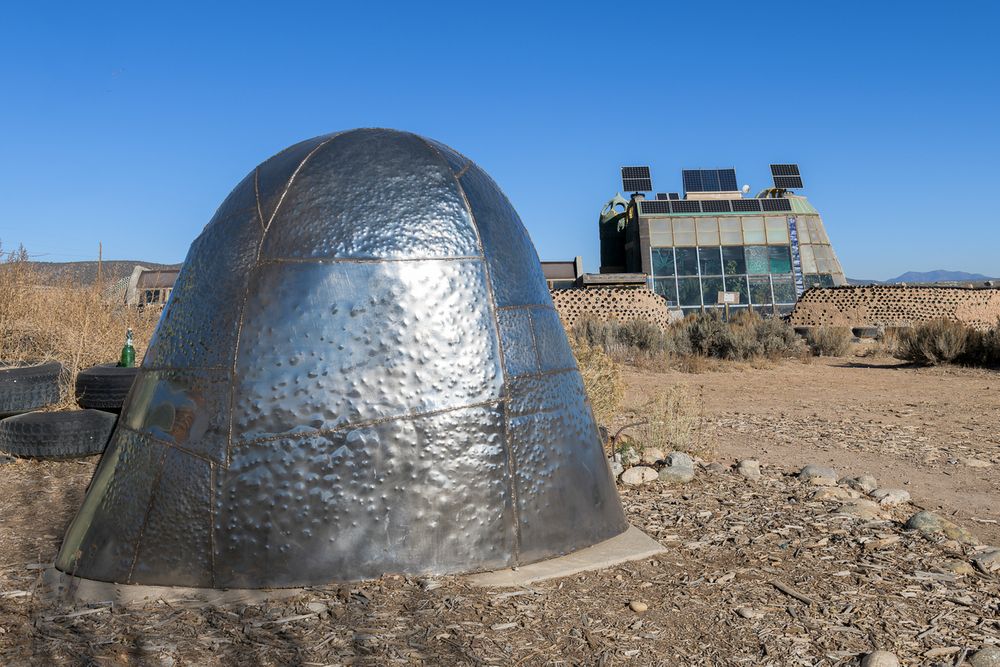
An Earthship building follows six design principles that provide the main thing a human needs to live a comfortable and healthy life off-grid.
1. Building with Reclaimed Materials
The basic idea of Earthships is built on sustainability, taking advantage of natural resources, basically the stuff that’s already out there. Furthermore, sourcing waste materials available locally takes priority, making them good for the local environment and raising awareness of climate change. From building structures using reclaimed tires plastered with earth to mud floors and bottles and densely packed monolithic walls made of mud, cans, bottles, and reclaimed metal and wood.
As much as possible, Earthships incorporate as many natural and upcycled materials for construction.
2. Thermal or Solar Heating and Cooling
The well-thought-out design also plays a huge role in Earthship’s climate control without using additional fuels. No use of electric heat or burning wood or fossil fuels.
The structures add natural ventilation through operable vent boxes and buried cooling tubes to enhance cooling. Secondly, the building’s living space is built with earth mass on three sides, with one side lined with windows facing the sun. As a result, the solidity of the structure provides a steady and comfortable temperature (heat or cold), while the glass windows on the south side maximize solar gain.
3. Own Renewable Power Plant
For an Earthship to be called one, the home itself should provide its own energy and only from renewable sources such as the wind and sun. Each structure has its own renewable power plant, from solar panels to inverters, batteries, and charge controllers.
View in gallery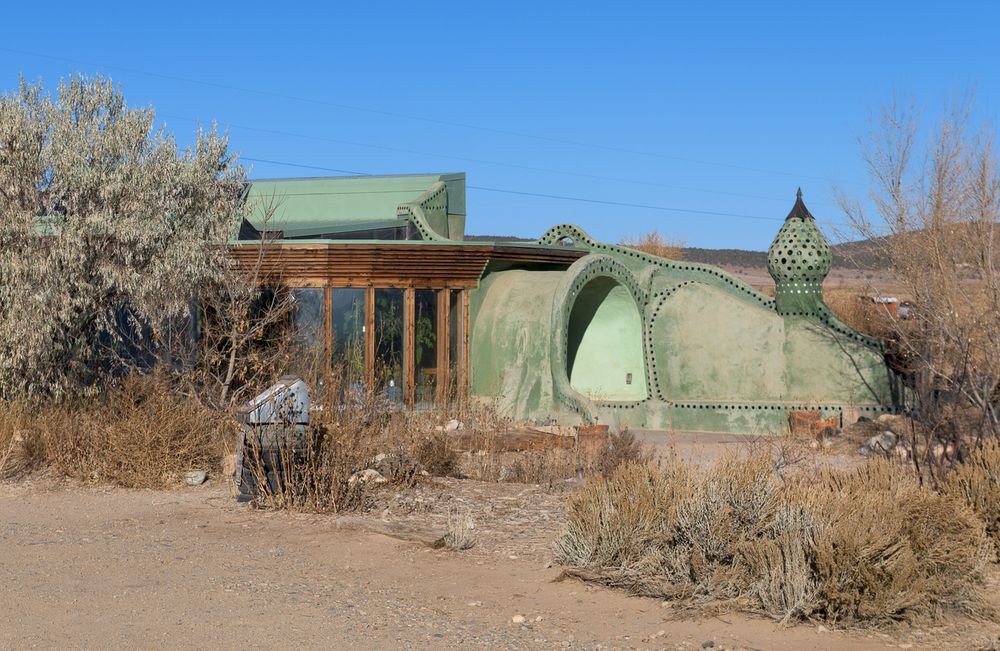
Does it provide enough to power an entire home, you ask? The answer is it does because of the “design down” system for the Earthship’s electrical requirements. That includes using incredibly efficient lighting, cooling systems, and pumps. And without the need for electricity for heating and air conditioning, the energy required to run a home is much lower.
These design adjustments lead to 25% less electrical needs to run an Earthship than a conventional house.
4. Contained Sewage Treatment
Part of a sustainable design of an Earthship home is onsite sewage treatment. It uses a biodigester toilet system that separates solid waste from liquid. The gray water then gets treated by plants as it passes through interior botanical cells until it’s clean enough for use in toilet tank flushing.
If that is not enough, Earthships are also equipped with an anaerobic digester for black water. The vacuum-sealed tank allows bacteria to break down the organic matter, turning it into biogas.
5. Water Harvesting and Treatment
An Earthship collects its own water from rain and snowmelt from the roof. The water collected gets stored in cistern tanks, positioned to gravity-feed the home’s water organization module. The filter system treats the water for bacteria and contaminants before sending it into a solar water heater and pressure tank to deliver it throughout the house, ready for use.
In short, an Earthship home can thrive without taking water from wells or municipal sources.
6. In-Home Food Production
For a structure to be completely self-sufficient, it should be able to produce food in-house as much as possible. It is why an internal organic food production system is a vital part of the Earthship Biotecture concept. It features food-producing plants like banana trees and vegetables thriving in interior gray-water botanical cells to grow for the inhabitants.
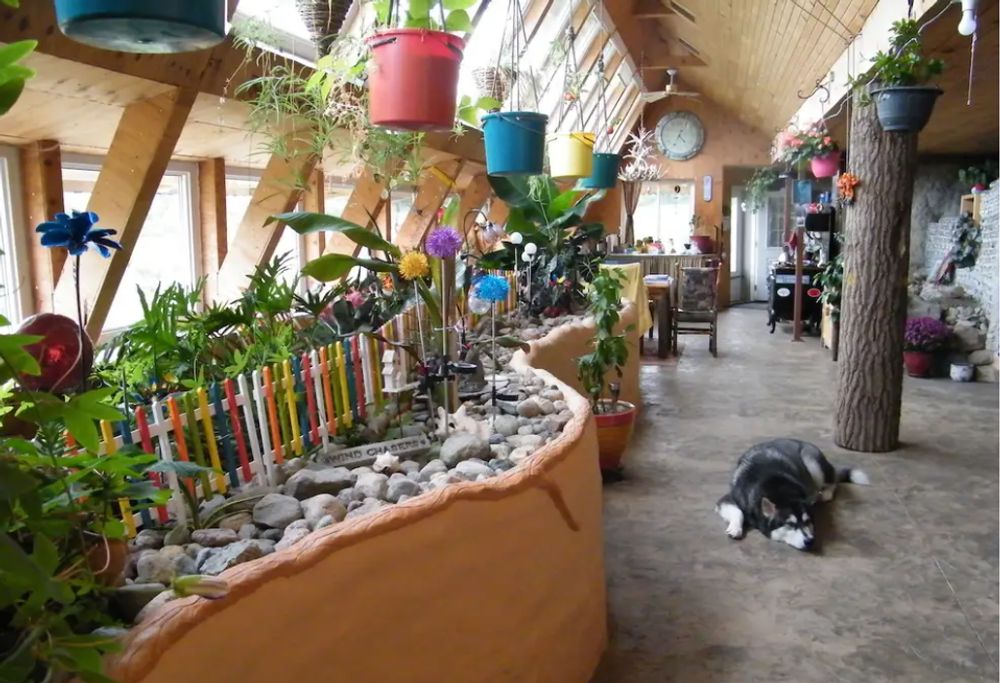
Earthship Academy offers extensive training on these design principles and construction methods. You can visit them in Taos, which provides sessions several times a year, with one session consisting of six days a week for an entire month of intensive classes, labs, and hands-on construction.
The Earthship Academy also offers the same program in other parts of the world through International Academies.
How Are Earthships Made?
Besides the six fundamental principles of an Earthship home, most Earthships also feature a horseshoe-shaped design to maximize natural light, especially during winter. Meanwhile, the Trombe walls featuring south-facing glass create a stunning greenhouse effect.
Other standard design features to construct an Earthship include:
- Tire walls
The concept of Earthships came about in the 1970s when recycling rates were low. And that strongly influenced the kind of materials used to build Earthships.
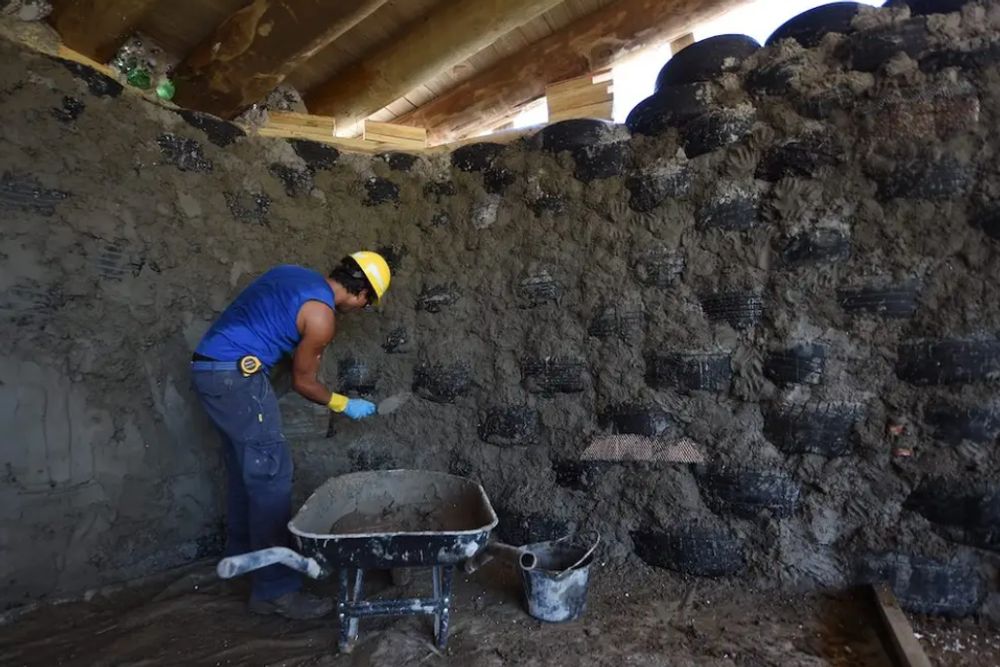
One of the common materials used is non-recycled tires filled with earth. Besides using what one would consider a “waste,” tire walls also have an undeniable advantage. Because they create relatively thick walls, they provide higher thermal mass that allows better climate control.
- Walls made of soda cans or bottles
Another familiar model for Earthships is a wall made of recycled materials like soda cans or bottles, making a stand-out feature.
Bottle bricks, in particular, which are made of glass bottles and earth as binding material, create an intriguing stained-glass wall.
- Roofs made from cans
Recycled cans are formed into a honeycomb design to make the roof of an Earthship reinforced with stucco or concrete. Although the roofing is not load-bearing, it adds a well-insulated feature to the entire structure.
View in gallery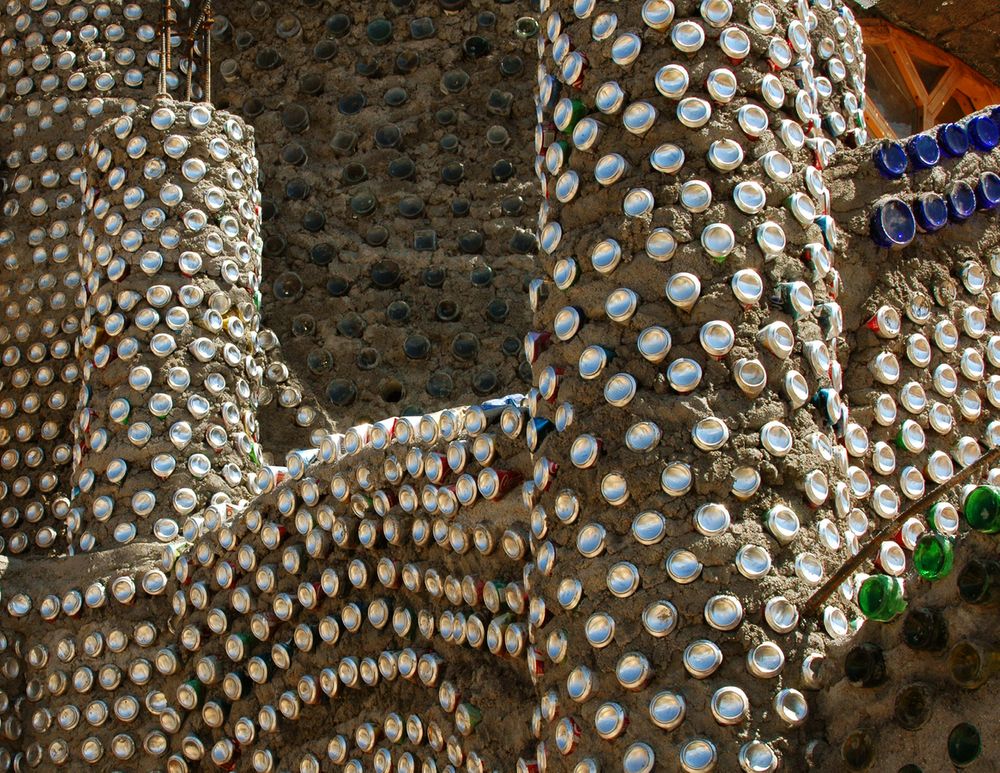
Overall, the creativity and ingenuity of making an Earthship are boundless. Its architectural design can be absolutely experimental. It is why it’s extremely rare to find any two Earthships that look anything similar.
Should You Build an Earthship?
Earthship, pioneered by architect Michael Reynolds in Taos, New Mexico, is a sustainable home that encourages easy living and cost-effectiveness, both in building and running the house.
Thinking of going off-grid and making one of your own Earthship?
The Advantages
There are plenty of benefits to an Earthship shelter and myriad reasons you should consider making or living in an Earthship home.
View in gallery
-
They are eco-friendly and easily sustainable.
An Earthship is as sustainable as a home can get from start to finish. From making the structure using discarded tires packed with earth and walls and roof made of recycled cans to self-generating energy and water to use throughout the seasons.
Earthships are 100% sustainable and designed for independent operation off the grid.
-
You’re growing your own food.
With an onsite greenhouse that can grow food year-round, you can basically get free food. So besides guaranteeing that you have enough to feed yourself no matter the climate, it’s also another way to save on food budgets.
The only missing from a typical Earthship model is a source for meat or eggs, although you can simply add a chicken coop or fish pond to your Earthship.
-
Efficient and sufficient lifestyle.
One of the greatest draws of these eco-homes is the design for climate control, which is efficient enough to keep the structure at a comfortable temperature throughout the year. The thermal mass alone operates as insulation when the interior needs warmth and a heat sink when it needs cooling off.
View in gallery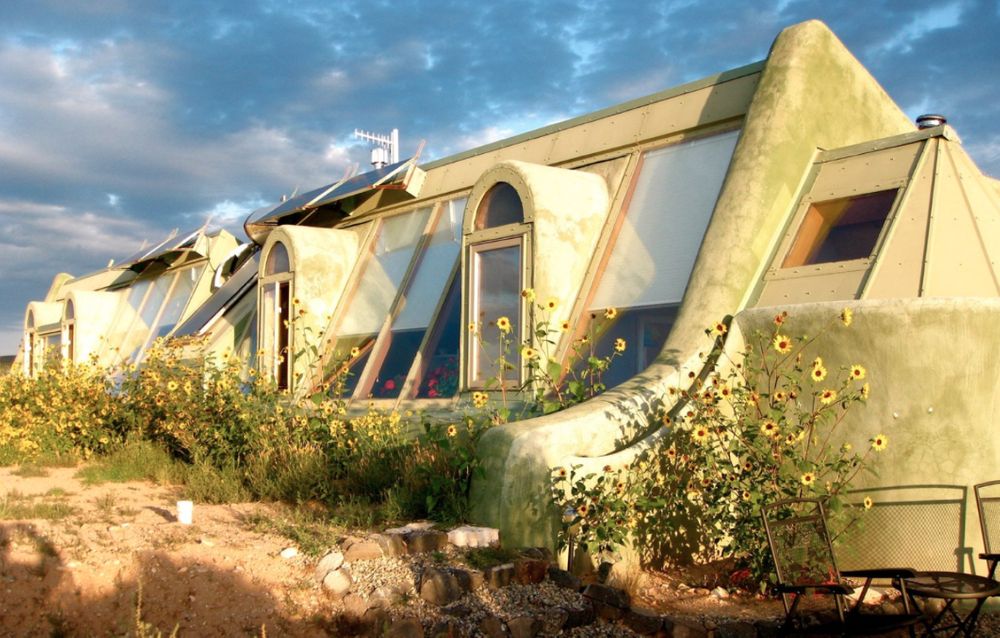
Yes, it’s efficient, but Earthship dwellings are not primitive. Although it can thrive off the grid, it has the comforts of a traditional 21st-century home, such as heating and cooling, although not in the conventional sense. Its comforts are more sustainable than that of a modern home.
-
Financial freedom.
With its solar panels lining the roof, wind turbines, and ultra-efficient electrical setup, an Earthship ensures that you are never short of electricity. That’s good enough, but what’s even better is you don’t have to pay an electric company for it.
The effective water harvesting techniques of an Earthship also allow plenty of savings. In addition, having little to no utility bills to pay when living in an Earthship home makes it appealing for many homeowners.
-
Simple construction.
Besides only using inexpensive materials, construction is also reasonably simple. It’s an owner-built sustainable home using printed plans. In short, you can construct your own home with your own hands, with no need to purchase expensive tools, and you only need basic carpentry, plumbing, and electric skills.
The Disadvantages
Although Earthship houses have several selling points, it’s not for everyone.
View in gallery
-
Home financing.
Although the Earthship concept has been around for decades, it’s still a very new concept for structural design. So, if you are looking for a traditional home loan or mortgage for your Earthship construction, it might not be easy to get one.
-
Permits and legality.
Like other alternative building methods, eco-construction might face a couple of problems regarding permit requirements and getting full planning permission. That includes zoning regulations and construction codes, which vary depending on location or state.
-
They are only effective in some climates.
In theory, you can make Earthships anywhere in the world. However, the traditional materials used to make Earthships, densely-packed earth tire walls, only work well in warm and arid climates like Taos, New Mexico. Unfortunately, it won’t hold up as much in humid, rainy climates. Another issue is making an Earthship home in places like an arid desert, where there could be insufficient water to keep the system running efficiently.
How Much Does an Average Earthship Cost?
On average, a home like this can cost anywhere between $150 to $225 per square footage.
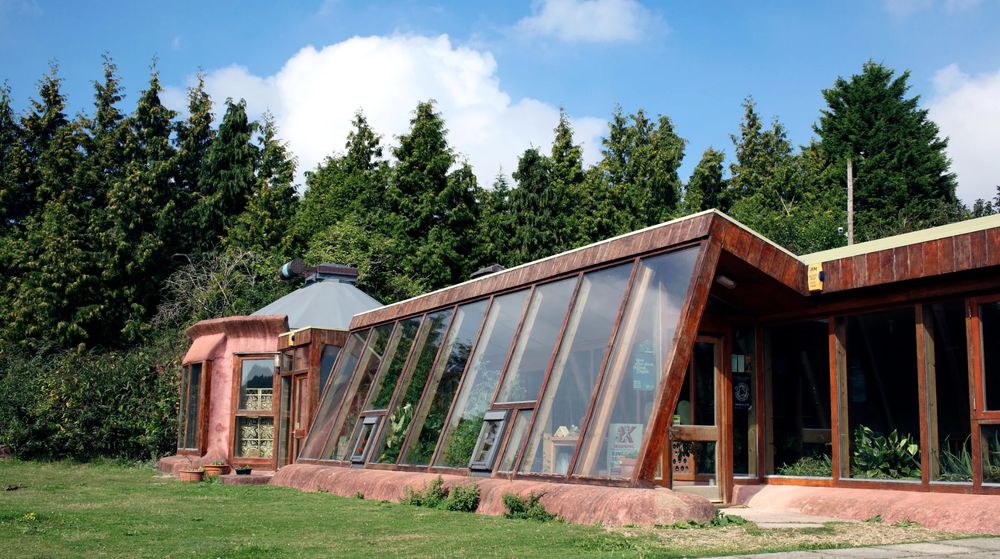
Although it uses relatively inexpensive materials like tires, bottles, and plastic trash, several factors add to the overall cost of creating an Earthship.
- Customization. Like any custom-built home, it can be a bit pricey to construct Earthships will all its trappings. It doesn’t benefit from common cost-saving methods available for making modern homes, like tiny houses. Specialized labor costs also add to this as there aren’t a lot of construction companies that have experience in eco-construction.
- Unique plumbing requirements. The in-house water and sewer system makes the plumbing project more complex than a typical home. Creating the area process for treating greywater, for example, is expensive enough.

- Renewable energy. Fitting the structure with enough renewable energy sources adds to its total cost. Although they can save you plenty in utility costs, wind energy systems and solar panels aren’t cheap to install.
How Long Will It Take to Build an Earthship?
Earthships are custom-built and constructed onsite, and it can take a couple of months up to two years to complete one. But on average, with an experienced crew and unlimited budget, you can have your Earthship home with a typical 2-bedroom, 1-bathroom setup ready for occupancy after four months of construction.
Final Thoughts on Earthship Homes
That’s everything about Earthships! So, is it worth it to make one for yourself?
Well, it all depends on the kind of lifestyle you’re looking for.
Does a comfortable off-grid, fuss-free lifestyle while also being conscious about climate change appeal to you? If yes, an Earthship would make a worthy investment. However, it’s also worth considering how much you’re willing to spend on one.
But in the end, doesn’t a self-reliant home that you can customize and one that protects the environment sounds like a great investment?




